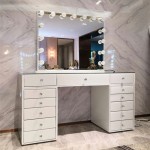1800s Antique Dresser with Mirror
The 1800s witnessed significant evolution in furniture design, reflecting changing societal values, technological advancements, and evolving aesthetic preferences. Antique dressers with mirrors from this era offer a glimpse into these historical shifts, showcasing craftsmanship, materials, and decorative elements characteristic of their respective periods. These pieces are not merely functional items but also serve as tangible connections to the past, embodying the artistry and lifestyles of bygone generations.
The early 1800s saw the lingering influence of Neoclassicism and the rise of the Empire style. Dressers from this period often featured clean lines, geometric shapes, and decorative motifs inspired by Greco-Roman architecture. Mahogany and other dark woods were popular choices, often embellished with ormolu mounts, brass hardware, and inlaid designs. Mirrors were typically integrated into the dresser design, either as a fixed part of the structure or as a separate, attachable piece. The overall aesthetic emphasized symmetry, balance, and a sense of grandeur, reflecting the prevailing aristocratic tastes.
The mid-1800s marked the arrival of the Victorian era, a period characterized by its eclectic mix of styles, including Gothic Revival, Rococo Revival, and Renaissance Revival. Victorian-era dressers showcased greater ornamentation and elaborate detailing. Carved wood, intricate marquetry, and decorative veneers were common features. Mirrors, often large and ornately framed, became a prominent element of the dresser, contributing to the overall sense of opulence and luxury. Popular wood choices included rosewood, walnut, and mahogany.
As the Victorian era progressed, the Aesthetic Movement began to gain traction, emphasizing artistic beauty and craftsmanship over strict adherence to historical styles. Dressers from this period often featured simpler lines and less ornamentation than earlier Victorian pieces, focusing instead on the beauty of the wood grain and the quality of construction. Japanese and East Asian influences became increasingly prevalent, reflected in the use of exotic woods, lacquer finishes, and decorative motifs inspired by Asian art.
Towards the end of the 1800s, the Arts and Crafts movement emerged, championing handcrafted furniture made with simple, honest materials. Dressers from this period typically showcased straightforward designs, emphasizing functionality and durability. Oak and other locally sourced woods were commonly used, often left unpainted or finished with simple stains to highlight the natural beauty of the wood. Mirrors were typically integrated into the dresser design, often with simpler frames that complemented the overall aesthetic of understated elegance.
Identifying genuine 1800s antique dressers with mirrors requires careful examination and attention to detail. Construction techniques provide valuable clues. Hand-cut dovetail joints, mortise and tenon joinery, and wooden pegs are indicative of earlier craftsmanship. Machine-made screws and nails became more prevalent as the century progressed. Examining the back of the dresser and the underside of drawers can reveal these telltale signs of construction methods.
The type of wood used is another important factor in authentication. Certain woods, such as rosewood and mahogany, were more commonly used during specific periods. The presence of veneers, marquetry, or other decorative techniques can also provide insight into the age and style of the dresser. Examining the finish can also offer clues. Early 1800s pieces often feature shellac or varnish finishes, while later pieces might exhibit the use of lacquer or paint.
Hardware plays a significant role in identifying the age and style of an antique dresser. Brass pulls, knobs, and escutcheons were common throughout the 1800s, but their designs evolved over time. Examining the style and material of the hardware can help determine the dresser’s age and authenticity. Similarly, the mirror itself can provide clues. The type of glass, the framing material, and the presence of any decorative elements can help identify the era and style of the dresser.
Provenance, or the history of ownership, is crucial when evaluating the authenticity and value of an antique dresser. Documentation, such as old photographs, receipts, or family histories, can provide valuable evidence of the dresser's age and origins. While provenance is not always available, it can significantly enhance the credibility and value of a piece.
The condition of an antique dresser is an important consideration. While some wear and tear are expected, significant damage or repairs can affect the value. Evaluating the structural integrity of the dresser, the condition of the drawers, and the presence of any repairs or restorations is essential. Original finishes are generally more desirable than later refinishes, as they contribute to the historical integrity of the piece.
Acquiring 1800s antique dressers with mirrors requires careful research and consideration. Reputable antique dealers, auction houses, and online marketplaces can be valuable resources. Consulting with an expert in antique furniture can provide valuable insights and guidance in the authentication and valuation process. Careful examination of the dresser's construction, materials, hardware, and mirror, coupled with research and expert consultation, can help ensure a knowledgeable and informed purchase.
Owning an 1800s antique dresser with mirror is more than just acquiring a piece of furniture; it's inheriting a piece of history. These pieces offer a glimpse into the lives and aesthetics of past generations, adding a touch of historical charm and elegance to any interior. Their enduring appeal lies not only in their beauty and craftsmanship but also in their ability to connect us to the past, serving as tangible reminders of the artistry and ingenuity of bygone eras.

Reduced Antique Solid Wood 5 Drawer Dresser With Mirror From The Early 1800 S Creative Bargains

Late 1800s Antique Walnut And Stone Dresser With Mirror Antiques

1800s Antique Wood 6 Drawer Dresser With Attached Beveled Mirror Chairish

Antique Rosewood Dresser Late 1800 S Furniture Vintage Decor Bedroom Beds

1800s Antique Tallboy Dark Wood Dresser With Beveled Mirror Chairish

Antique Dresser Empire Mahogany With Mirror Dark Wood Tones 1800 S Old Europe Home Furnishings

024 Antique Dresser Late 1800 S 1900 Dark Oak Mirror Dove Tail Gentleman

Antique Oak Ladys Dresser Low W Lrg Mirror Claw Feet Wow Long Valley Traders

Antique Three Drawer Marble Top Dresser With Mirror Victorian Walnut Wishbone Circa 1875 Dressers

Sold 1800s Farmhouse Empire Qdresser With Mirror Antique








